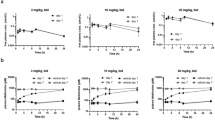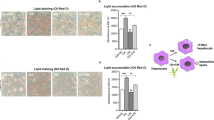Abstract
Background and Aim
The host dietary fibre is fermented into short-chain fatty acids (SCFA) by intestinal microbiota as bacterial metabolites like propionate, acetate and butyrate. Among these metabolites, the role of butyrate is well documented to provide energy to intestinal epithelial cells. Also, butyrate has anti-inflammatory and anti-tumour properties and decrease in its level by unbalanced diet can develops cancer. Lately, some research has suggested that sodium butyrate as an inhibitor of histone deacetylase (HDAC) may have anticancer potential for hepatocellular carcinoma (HCC), the most common type of liver cancer. Since, HCC is asymptomatic it is usually diagnosed at its advanced stage. Sorafenib with antiproliferative and antiangiogenic effects is the first line of treatment in advanced HCC. However, prolonged drug treatment to HCC patients develops adaptive resistance towards the sorafenib. Sorafenib resistance can also be enhanced by differentially expressed microRNAs. However, the significance of butyrate in HCC sorafenib resistance and its association with sorafenib-targeted microRNAs is yet to be unfurled. Here, an attempt has been made to explore the role of bacterial metabolite butyrate on sorafenib resistant HCC as well as on sorafenib-targeted microRNAs (miR-7641 and miR-199) to curtail sorafenib resistance in HCC.
Methods
Initially, in-silico analysis was performed using Human Metabolome Database (HMDB) so to identify specific butyrate producing faecal bacteria. Then, their specific 16s rRNA expression was compared between HCC patients and healthy individuals using qRT-PCR. Additionally, the cell viability (MTT) and apoptosis assays were performed in both parental and sorafenib resistant HepG2 cells to evaluate the role of sodium butyrate in sorafenib resistant HCC. Moreover, the association of sodium butyrate with sorafenib-targeted miR-7641 and miR-199 was also assessed using real time PCR, cell viability, cell apoptosis and transfection assays.
Results
In silico analysis demonstrated Roseburia cecical, Roseburia intestinalis, Eubacterium rectal, Faecalibacterium prausnitzii as specific butyrate producing faecal bacteria and their 16s rRNA expression was downregulated in HCC patients. In vitro study revealed the presence of sodium butyrate also decreased the cell viability as well as enhanced cell apoptosis of both parental and resistant HepG2 cells. Interestingly, sodium butyrate also decreased the expression of both sorafenib-targeted miR-7641 and miR-199. Further, combination of both sodium butyrate and antimiR-7641 or antimiR-199 also increased apoptosis and decreased viability of resistant cells.
Conclusion
This is first study to unravel the association of butyrate producing bacteria with HCC patients and the significance of bacterial metabolite butyrate as anti-tumour in sorafenib resistant hepatocellular carcinoma. The study also demonstrated the plausible new aspects of bacterial metabolite butyrate association with sorafenib-targeted miRNAs (miR-7641 and miR-199). Hence, the study highlighted the therapeutic potential of bacterial metabolite butyrate that might improve the clinical management of hepatocellular carcinoma.
















Similar content being viewed by others
Data availability
All the Raw research data is analyzed and it is incorporated as graphs, figures and tables in the form of present Manuscript.
References
Acharya SK (2014) Epidemiology of hepatocellular carcinoma in India. J Clin Exp Hepatol 4(Suppl 3):S27-33
Bartel DP (2004) MicroRNAs: genomics, biogenesis, mechanism, and function. Cell 116(2):281–297
Bray F, Ferlay J, Soerjomataram I, Siegel RL, Torre LA, Jemal A (2018) Global cancer statistics 2018: GLOBOCAN estimates of incidence and mortality worldwide for 36 cancers in 185 countries. CA Cancer J Clin 68(6):394–424
Crissien AM, Frenette C (2014) Current management of hepatocellular carcinoma. Gastroenterol Hepatol 10(3):153–161
Drakaki A, Iliopoulos D (2009) MicroRNA gene networks in oncogenesis. Curr Genomics 10(1):35–41
European Association for the Study of the Liver; European Organisation for Research and Treatment of Cancer (2012) EASL-EORTC clinical practice guidelines: management of hepatocellular carcinoma. J Hepatol 56(4):908–943
Haque TR, Barritt AS 4th (2016) Intestinal microbiota in liver disease. Best Pract Res Clin Gastroenterol 30(1):133–142
Humphreys KJ, Cobiac L, Le Leu RK, Van der Hoek MB, Michael MZ (2013) Histone deacetylase inhibition in colorectal cancer cells reveals competing roles for members of the oncogenic miR-17-92 cluster. Mol Carcinog 52:459–474
Jia W, Li H, Zhao L, Nicholson JK (2008) Gut microbiota: a potential new territory for drug targeting. Nat Rev Drug Discov 7(2):123–129
Kanthaje S, Makol A, Chakraborti A (2018) Sorafenib response in hepatocellular carcinoma: microRNAs as tuning forks. Hepatol Res 48(1):5–14
Kaur R, Kanthaje S, Taneja S, Dhiman RK, Chakraborti A (2022) miR-23b-3p modulating cytoprotective autophagy and glutamine addiction in sorafenib resistant HepG2, a hepatocellular carcinoma cell line. Genes (basel) 13(8):1375
Kuwahara A (2014) Contributions of colonic short-chain fatty acid receptors in energy homeostasis. Front Endocrinol 5:144
Li C, Yin Y, Liu X, Xi X, Xue W, Qu Y (2017) Non-small cell lung cancer associated microRNAs expression signature: integrated bioinformatics analysis, validation and clinical significance. Oncotarget 8(15):24564–24578
Loguercio C, Federico A (2003) Oxidative stress in viral and alcoholic hepatitis. Free Radic Biol Med 34(1):1–10
Lokesh KN, Chaudhuri T, Lakshmaiah KC, Babu KG, Dasappa L, Jacob LA et al (2017) Advanced hepatocellular carcinoma: a regional cancer center experience of 48 cases. Indian J Cancer 54(3):526–529
Makol A, Kaur H, Sharma S, Kanthaje S, Kaur R, Chakraborti A (2020) Vimentin as a potential therapeutic target in sorafenib resistant HepG2, a HCC model cell line. Clin Mol Hepatol 26(1):45–53
Orcutt ST, Anaya DA (2018) Liver resection and surgical strategies for management of primary liver cancer. Cancer Control 25(1):1073274817744621
Wan MLY, El-Nezami H (2018) Targeting gut microbiota in hepatocellular carcinoma: probiotics as a novel therapy. Hepatobiliary Surg Nutr 7(1):11–20
Wang HG, Huang XD, Shen P, Li LR, Xue HT, Ji GZ (2013) Anticancer effects of sodium butyrate on hepatocellular carcinoma cells in vitro. Int J Mol Med 31(4):967–974
Wilhelm SM, Carter C, Tang L, Wilkie D, McNabola A, Rong H et al (2004) BAY 43–9006 exhibits broad spectrum oral antitumor activity and targets the RAF/MEK/ERK pathway and receptor tyrosine kinases involved in tumor progression and angiogenesis. Cancer Res 64(19):7099–7109
Wu X, Wu Y, He L, Wu L, Wang X, Liu Z (2018) Effects of the intestinal microbial metabolite butyrate on the development of colorectal cancer. J Cancer 9(14):2510–2517
Yu LX, Schwabe RF (2017) The gut microbiome and liver cancer: mechanisms and clinical translation. Nat Rev Gastroenterol Hepatol 14(9):527–539
Zhu YJ, Zheng B, Wang HY, Chen L (2017) New knowledge of the mechanisms of sorafenib resistance in liver cancer. Acta Pharmacol Sin 38(5):614–622
Funding
RK and SK awarded JRF/SRF fellowship from ICMR, New Delhi during their PhD work.
Author information
Authors and Affiliations
Contributions
R.K. and M.K. have participated in the study concept and its design, acquisition of data and its analysis, and also in manuscript preparation. S.K. and R.K.D. have critically revised the manuscript. A.C. has participated in the supervision of study, interpretation of data for important intellectual content.
Corresponding author
Ethics declarations
Competing interests
The authors declare no competing interests.
Additional information
Publisher's Note
Springer Nature remains neutral with regard to jurisdictional claims in published maps and institutional affiliations.
Supplementary Information
Below is the link to the electronic supplementary material.
Rights and permissions
Springer Nature or its licensor (e.g. a society or other partner) holds exclusive rights to this article under a publishing agreement with the author(s) or other rightsholder(s); author self-archiving of the accepted manuscript version of this article is solely governed by the terms of such publishing agreement and applicable law.
About this article
Cite this article
Kumar, M., Kaur, R., Kanthaje, S. et al. Bacterial metabolite butyrate in modulating sorafenib-targeted microRNAs to curtail its resistance in hepatocellular carcinoma. J Cancer Res Clin Oncol 149, 5823–5839 (2023). https://doi.org/10.1007/s00432-022-04544-7
Received:
Accepted:
Published:
Issue Date:
DOI: https://doi.org/10.1007/s00432-022-04544-7




